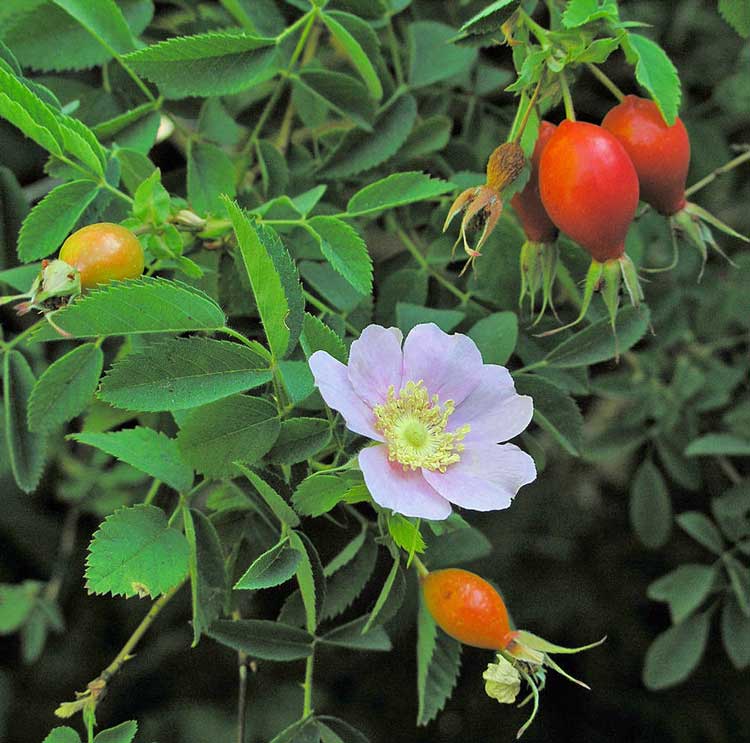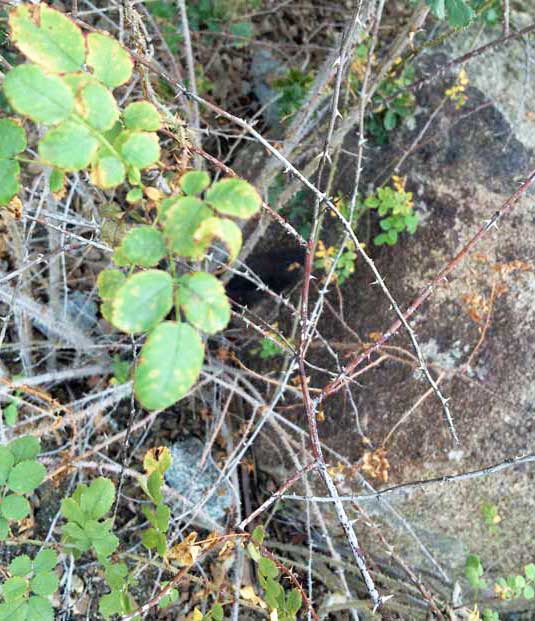Ethnobotany of southern California native plants:
Wild Rose (Rosa californica)
Wild Rose (Rosa californica)
Wild rose, also known as California wildrose, is a species of rose shrub native to California, Oregon and northern parts of Mexico. This showy dicot does well in chaparral, oak woodlands and the foothills of the Sierra Nevada mountain range. Wild rose grows at elevations between 2,000 and 6,000 feet and can survive droughts, but prefers moderately moist soils.
As the name implies, Rosa californica produces attractive 2-inch pink flowers.
Wild rose hips
Once the petals fall, a large rose hip is left behind. These red hips are about 1 inch around and produce an appealing fragrance. You can find these rose hips attached to wild rose plants throughout the winter. In this manner, the hips provide a food source for wild mammals in the lean winter months, when no other fruits are available.
These rose hips were valued during World War II on account of their high vitamin C content. Soldiers could nourish themselves while out training in the field.
The Cahuilla people were fond of eating raw wild rose hips. The hips can be crushed and turned into a jelly or else steeped in water to make tea. In May through June, the blossoms could be picked and made into a beverage. Prior to blossoming, the buds were also eaten.
The roots of this plant could also be steeped in water to make tea. The Cahuilla drank this root tea as a remedy for colds.
References:
Johnston, Alex 1987 Plants and the Blackfoot. Lethbridge, Alberta. Lethbridge Historical Society (p. 39)
Please return to our main Ethnobotany of southern California page.
On our main ethnobotany page, we present a clickable list of the southern California native plants that became a part of the culture of Native Americans and early European settlers. These plants were used for medicine, food, shelter, drink, tools and art.
Warning: The information about plants on this website is intended for general educational purposes only. The author of this website accepts no responsibility for problems arising from the user’s misidentification, misuse, or use of plants. Please read the full TERMS associated with this website.


